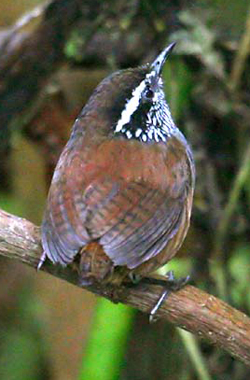Mexico City

Birding Distrito Federal
Mexico City (in Spanish: Ciudad de México, D.F., Distrito Federal, México or Méjico)[1] is the capital city of Mexico. It is the most important economic, industrial and cultural center in the country, and the most populous city with 8,836,045 inhabitants in 2008.[2] Greater Mexico City (Zona Metropolitana del Valle de México) incorporates 59 adjacent municipalities of Mexico State and 1 municipality of the state of Hidalgo, according to the most recent definition agreed upon by the federal and state governments.
Mexico City comprehends also the Federal District (Distrito Federal in Spanish, and hence the abbreviation D.F.). The Federal District is coextensive with Mexico City: both are governed by a single institution and are constitutionally considered to be the same entity. This has not always been the case. The Federal District, created in 1824, was integrated by several municipalities, one of which was the municipality of Mexico City. As the city began to grow, it engulfed all other municipalities into one large urban area. In 1928, all municipalities within the Federal District were abolished, an action that left a vacuum in the legal status of Mexico City vis-à-vis the Federal District, even though for most practical purposes they were traditionally considered to be the same entity.
The Federal District is located in central-South Mexico. It is bounded by the state of Mexico on the west, north and east, and by the state of Morelos on the south. Mexico City and its metropolitan area, which extends over the state of Mexico, are located in the Valley of Mexico or Anáhuac, a 9,560 km2 (3,691 sq mi) valley that lies at an average of 2,240 m (7,349 ft) above sea level. This valley is a basin surrounded by mountains on all four sides, with only one small opening at the north. At the southern part of the basin, the mountain range reaches an altitude of 3,952 m (12,966 ft) above sea level; and to the east the volcanoes reach an altitude of more than 5,000 m (16,000 ft). Three of Mexico’s tallest peaks are located within 100 miles of the city, those being Popocatépetl at 5,426 m (17,802 ft), Iztaccíhuatl at 5,230 m (17,159 ft), and Nevado de Toluca at 4,680 m (15,354 ft), respectively.
The region of the Valley of Mexico receives anti-cyclonic systems, whose weak winds do not allow for the dispersion, outside the basin, of the air pollutants which are produced by the 50,000 industries and 4 million vehicles operating in or around the metropolitan area.[32]Mexico City has a temperate highland climate (Koppen Cwb), due to its tropical location and high elevation. The lower region of the valley receives less rainfall than the upper regions of the south; the lower boroughs of Iztapalapa, Iztacalco, Venustiano Carranza and the west portion of Gustavo A. Madero are usually drier and warmer than the upper southern boroughs of Tlalpan and Milpa Alta, a mountainous region of pine and oak trees known as the range of Ajusco.The average annual temperature varies from 12 to 16°C (53 to 60°F), depending on the altitude of the borough. Lowest temperatures, usually registered during January and February, may reach -2 to -5°C (28 to 23°F), usually accompanied by snow showers on the southern regions of Ajusco, and the maximum temperatures of late spring and summer may reach up to 32°C (90°F). Overall precipitation is heavily concentrated in the summer months, including dense hail. The central valley of Mexico rarely gets precipitation in the form of snow during winter; the two last recorded instances of such an event were on March 5, 1940 and January 12, 1967.
-
Wikipedia
GNU Free Documentation License
http://en.wikipedia.org/wiki/Mexico_City
-
2013 [12 December] - Michael Hurben
ReportMy wife and I recently returned from a six-day visit to the Mexico City area (November 26-Dec 1, 2013). We had a number of goals with this trip: to get to “know” the city for any future visits; to see many of principal historical and cultural sites (and there are many); to enjoy what we consider the best cuisine on the planet in the country of its origin; and finally, to go BIRDING!
